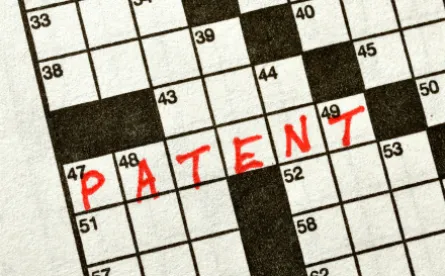In its Decision, the Board found that Petitioner had established a reasonable likelihood of prevailing with respect to claim 10, but not with respect to claims 17 and 18. The Board also granted Petitioner’s Motion for Joinder with IPR2014-00513 (“the ’513 proceeding”). In addition to the ’513 proceeding, Petitioner challenged the ’550 patent in a Petition that was ultimately not instituted by the Board. IPR2014-00512 (“the ’512 Petition”).
The ’550 patent “discloses using a ‘Mycobacterium smegmatis porin (Msp)’ to detect analytes in liquid media.” With regard to claim construction, Petitioner contended that only those terms construed in the ’513 proceeding needed a construction, and Patent Owner did not disagree. The Board therefore adopted its constructions set forth in the ’513 proceeding – i.e., claim 1 “requiring that an analyte, if present, must translocate, that is, move, from the first medium through the Msp porin to the second medium, when the electric field is applied.”
Turning to the analysis of the prior art, the Board first addressed the alleged obviousness of claim 10 over the ’782 patent and the Butler reference. The Board was persuaded by Petitioner’s arguments and evidence that “an ordinary artisan would have been prompted to use Butler’s SSN-MspA mutant porin in the ’782 patent’s nanopore-based nucleic acid analysis methods.” Patent Owner argued that “Butler expressed skepticism as to whether its results involved DNA translocation, and that Butler cautioned that mechanisms other than translocation may have been responsible for the results of its experiments.” Thus, Patent Owner concluded, a person of skill in the art “would have had no reasonable expectation that the method could successfully be used with multiple analytes, as claim 10 requires.” The Board was not persuaded, and noted that “absolute predictability of success” is not required; instead, “all that is required is a reasonable expectation of success.”
The Board next addressed the alleged obviousness of claims 10, 17, and 18 over the ’782 patent and the Gundlach Grant Abstract. The Board agreed with Patent Owner that Petitioner failed to establish a reasonable likelihood of prevailing on this ground. In particular, the Board found that contrary to Petitioner’s arguments, “rather than disclosing a specific protein like Butler, … the Gundlach Grant Abstract does not describe a prior art element having an established function which an ordinary artisan would have simply substituted for the pores used in the ’782 patent.” Instead, the teaching in the Gundlach Grant Abstract was “the type of teaching discussed in Kubin as failing to provide a reasonable expectation of success.” In re Kubin, 561 F.3d 1351, 1359 (Fed. Cir. 2009).
Patent Owner also argued that the Petition should be denied pursuant to the Board’s discretion under 35 U.S.C. § 325(d) because Petitioner would otherwise have an improper “second bite at the apple.” In this regard, Patent Owner argued that Petitioner was attempting to correct deficiencies in the ’512 Petition, presenting substantially the same prior art and arguments that were rejected by the Board. The Board acknowledged that it has exercised discretion in denying petitions in such circumstances. However, the Board has also declined to deny petitions “where different disclosures were relied upon in previously presented prior art.” First, the Board noted that the ground based upon the Gundlach Grant Abstract was not being instituted on the merits. Second, with respect to the ground challenging claim 10, the Board found that “Petitioner has not presented substantially the same arguments as presented in the ’512 Petition,” while pointing to the fact that trial was being instituted on the merits in the instant proceeding in contrast to the ’512 Petition.
Turning to the joinder request, Petitioner argued that “the Board previously has allowed joinder of additional grounds presented by the same party.” In contrast, Patent Owner argued that “the Board has held that § 315(c) does not authorize joinder of grounds presented in different petitions by the same party.” Patent Owner also asserted that the different grounds – anticipation versus obviousness – “are sufficiently different such that discovery and briefing will not be simplified,” that Patent Owner’s response and discovery periods would be curtailed, and that joinder “would allow Petitioner to circumvent the rules.”
The Board exercised its discretion to grant joinder. The Motion for Joinder was timely filed (within one month of the institution date of the ’513 proceeding), and the proceedings involved the same parties, same challenged claim, and the same Butler reference. The Board also noted that an expanded panel in Target Corp. v. Destination Maternity Corp., Case IPR2014-00508, slip op. 1–6 (PTAB Feb. 12, 2015) decided “that § 315(c) authorizes joinder of additional grounds to a proceeding involving the same parties.” With respect to the issue concerning serial petitions and Patent Owner’s assertion that Petitioner was circumventing the rules, the Board highlighted the fact that no copending litigation existed. Therefore, Petitioner was “not using its Joinder Motion as a means to circumvent the § 315(b) bar and obtain consideration on the merits of challenges it otherwise would not be entitled to present.” Finally, to address any potential prejudice to Patent Owner, the Board adjusted the schedule of the proceeding to provide for a reasonable period of time to respond and conduct discovery.
Oxford Nanopore Tech. Ltd. v. Univ. of Washington and UAB Research Foundation, IPR2015-00057
Paper 28: Decision Granting Petitioner’s Motion for Joinder and Instituting Inter Partes Review
Dated: April 27, 2015
Patent: 8,673,550 B2
Before: Francisco C. Prats, Jacqueline Wright Bonilla, and Sheridan K. Snedden
Written by: Prats
Related Proceedings: IPR2014-00512; IPR2014-00513



 />i
/>i

